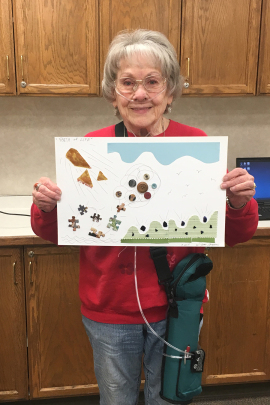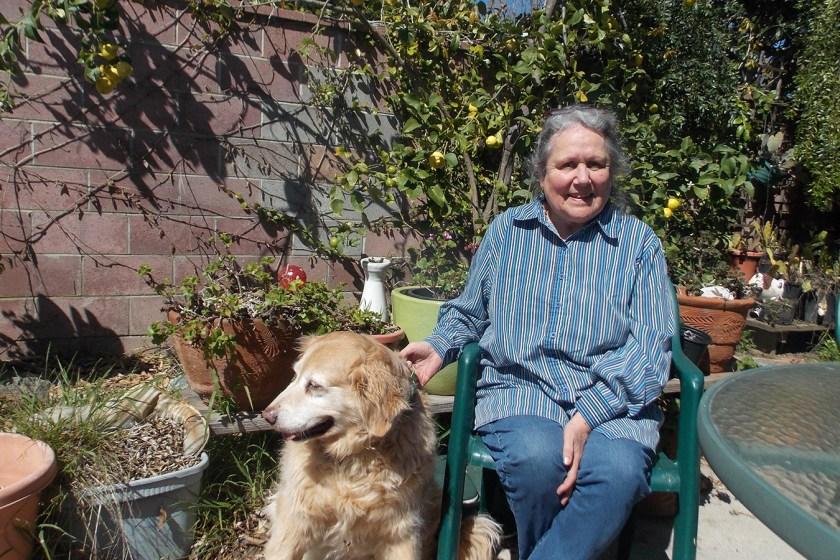Women are at greatly increased risk of smoking-related lung disease. American Joan Cousins is part of a generation of young women who have heard and embraced the notion that smoking is sophisticated, fashionable, and even liberating. No one thought then that having a life-shortening, choking lung disease would make them more equal to men.
“Everybody smokes. It’s cool,” said Cousins, who tried his first cigarette 67 years ago at age 16.
But one day, Cousins started coughing and couldn’t stop, not even taking a deep breath. He went to a hospital where doctors told him he had a progressive lung disease called chronic obstructive pulmonary disease (COPD). “Not being able to breathe was horrible … I never tried smoking again,” Cousins said.
Data about lung disease
Traditionally considered a male disease, COPD now kills more women than men in the United States. Women make up 58 percent of the country’s 14.7 million people with the disease and 53 percent of those who die from it, according to the American Lung Association. Nearly 8 percent of women reported chronic obstructive pulmonary disease (COPD), compared with just under 6 percent of men.
Former First Lady Barbara Bush, 92, suffers from the disease. On Monday, April 16, a Bush family spokesman announced that Bush had decided to start receiving “comfort care,” a type of end-of-life care that sparked debate about how to stop treating terminal illnesses.
“It’s a huge public health problem for women that really isn’t getting enough attention,” said Dr. Meilan Han, an associate professor of medicine at the University of Michigan. “It’s one of the leading killers of women in this country.”
Because COPD is usually associated with men, women are often not diagnosed until the disease is advanced. Symptoms include chronic cough, wheezing, chest tightness, and shortness of breath. There is no cure, but its progression can be slowed. After a COPD diagnosis, the most important thing a patient can do is quit smoking.
Historical Background of Smoking
Researchers largely attribute the increase in COPD deaths to women’s gradual smoking. At the end of the 19th century, at the same time as the mass production of cigarettes, men began to smoke in groups. In the 1920s and 1930s, tobacco companies began advertising to women, appealing to their sense of independence and desire for social and sexual attraction.
Another wave of advertising campaigns in the late 1960s and early 1970s induced large numbers of women and teenagers to start smoking. Brands like Virginia Slims capitalized on the women’s liberation movement with catchy slogans including “You’ve come a long way, girl.”
“The effects of COPD can last for decades,” said May-Lin Wilgus, MD, assistant clinical professor and pulmonologist at UCLA Health. “We saw the effects of heavy smoking among women, especially in the 1960s and 1970s.”
Why does lung disease affect women more?
Gender differences also lead to an increased risk of COPD in women. Women may be more susceptible to the toxic effects of cigarette smoke than men, research suggests. The exact cause is unknown, but researchers believe one factor is that women typically have smaller lungs. Estrogen also exacerbates lung damage caused by smoking.
Cousins, who quit smoking at age 62, said he now carries an oxygen tank with him wherever he goes. He jokingly calls him “his best friend.” At night, she sleeps on a machine that helps keep her airway open. Despite the assisted breathing, Cousins said he often felt a pressure on his chest. The 83-year-old, who lives southeast of San Francisco, is still able to farm and create art, her expertise including decorating charred wood, but she describes the disease as a “slow suffocation.”

What is considered lung disease?
COPD is a general term used to describe progressive lung diseases, including chronic bronchitis, emphysema, and other conditions that make it difficult for people to expel air from their lungs. In addition to smoking, factors such as pollution and genetics can also contribute to the disease.
Women are more likely than men to develop respiratory illnesses, which can be caused by infections or exposure to pollutants. Frequent crises are associated with faster disease progression.
Is there a cure?
COPD treatments that temporarily improve symptoms and lung function include bronchodilators, inhalers and steroids that open the airways, Han said. She is also a volunteer spokesperson for the American Lung Association. In the most severe cases, a lung transplant may be required.
Doctors and advocates say many women have the disorder unknowingly because they don’t know or are unwilling to seek help.
“If they’re having trouble breathing up the stairs, they might say, ‘I’m a little old, a little heavy, or out of shape,'” says Stephanie Williams, director of community programs at the COPD Foundation , she recently conducted a webinar on women’s diseases. “Women put off treatment for longer and hide their symptoms.”
Learn about Inez Shakman’s story
Inez Shakman, 73, of Ventura, Calif., was a patient of Dr. Wilgers. She said she has had trouble breathing for years and the common cold tends to linger in her chest for longer than expected. He even took a short walk. He only found out he had COPD about four months ago. I have never heard of this disease. Now, with medication, he can walk in the park without stopping or getting out of breath, he said.
Chronic obstructive pulmonary disease has long been taught in medical schools, but in a book featuring drawings of men with the disease, researchers have uncovered gender bias in medical diagnoses. In a famous study, doctors were more likely than women to make the correct diagnosis when they hypothesized that it was correct in patients.
Caroline Gainer, a 74-year-old retired teacher who lives in the rural West Virginia town of Daniels, has repeatedly told doctors about her symptoms, which include a morning cough and trouble breathing. “He thought I had asthma,” he said.
Eventually, he was diagnosed with COPD and now needs oxygen to move. That’s when he quit smoking with the help of nicotine patches after smoking for half a century. “I did everything I was supposed to do,” Gaynor said. “Maybe I can’t stop the progression of the disease, but I can slow it down,” he said.
credit
KHN’s coverage in California is supported in part by the following Blue Shield of California Foundation.
Author: Anna Gorman: @Anna Gorman
Cover photo: Anna Gorman/California Healthline
Photo Description: Inez Shakman of Ventura, California, was recently diagnosed with chronic obstructive pulmonary disease (COPD). She walks her dog, Joy, whenever she gets the chance, but she gets breathless easily. (Anna Gorman/California Healthline)
KFF Health News is a national newsroom producing detailed news on health issues. Along with policy analysis and investigation, KFF Health Journalism is one of the three main operating programs of KFF (Kaiser Family Foundation). KFF is a nonprofit organization that provides information on health issues to the nation.

